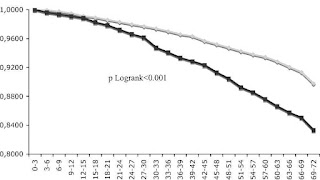Excessive daytime sleepiness (EDS) is characterized by persistent sleepiness and often a general lack of energy, even during the day after apparently adequate or even prolonged nighttime sleep. EDS can be considered as a broad condition encompassing several sleep disorders where increased sleep is a symptom, or as a symptom of another underlying disorder like narcolepsy, sleep apnea or a circadian rhythm sleep disorder.
Some persons with EDS, including those with hypersomnias like narcolepsy and idiopathic hypersomnia, are compelled to nap repeatedly during the day; fighting off increasingly strong urges to sleep during inappropriate times such as while driving, while at work, during a meal, or in conversations. As the compulsion to sleep intensifies, the ability to complete tasks sharply diminishes, often mimicking the appearance of intoxication. During occasional unique and/or stimulating circumstances, a person with EDS can sometimes remain animated, awake and alert, for brief or extended periods of time. EDS can affect the ability to function in family, social, occupational, or other settings. A proper diagnosis of the underlying cause and ultimately treatment of symptoms and/or the underlying cause can help mitigate such complications.
Video Excessive daytime sleepiness
Diagnosis
An adult who is compelled to nap repeatedly during the day may have excessive daytime sleepiness; however, it is important to distinguish between occasional daytime sleepiness and excessive daytime sleepiness, which is chronic.
A number of tools for screening for EDS have been developed. One is the Epworth Sleepiness Scale which grades the results of a questionnaire. The ESS generates a numerical score from zero (0) to 24 where a score of ten [10] or higher may indicate that the person should consult a specialist in sleep medicine for further evaluation.
Another tool is the Multiple Sleep Latency Test (MSLT), which has been used since the 1970s. It is used to measure the time it takes from the start of a daytime nap period to the first signs of sleep, called sleep latency. The test is based on the idea that the sleepier people are, the faster they will fall asleep.
The Maintenance of Wakefulness Test (MWT) is also used to quantitatively assess daytime sleepiness. This test is performed in a sleep diagnostic center. The test is similar to the MSLT. However, during this test the patient is instructed to try to stay awake.
Maps Excessive daytime sleepiness
Causes
EDS can be a symptom of a number of factors and disorders. Specialists in sleep medicine are trained to diagnose them. Some are:
- Insufficient quality or quantity of night time sleep.
- Misalignments of the body's circadian pacemaker with the environment (e.g. jet lag, shift work or other circadian rhythm sleep disorders).
- Another underlying sleep disorder, such as narcolepsy, sleep apnea, idiopathic hypersomnia or restless legs syndrome.
- Disorders such as clinical depression or atypical depression.
- Tumors, head trauma, anemia, kidney failure, hypothyroidism or an injury to the central nervous system.
- Drug abuse.
- Genetic predisposition
- Vitamin deficiency, such as Biotin deficiency
- Particular classes of prescription and OTC medication
Treatment
Treatment of EDS relies on identifying and treating the underlying disorder which may cure the person from the EDS. Drugs like modafinil, Armodafinil, Xyrem (sodium oxybate) oral solution, have been approved as treatment for EDS symptoms in the U.S. There is declining usage of other drugs such as methylphenidate (Ritalin), dextroamphetamine (Dexedrine), amphetamine (Adderall), lisdexamfetamine (Vyvanse), methamphetamine (Desoxyn), and pemoline (Cylert), as these psychostimulants may have several adverse effects and may lead to dependency when illicitly misused.
See also
- Kleine-Levin syndrome
References
Source of the article : Wikipedia

